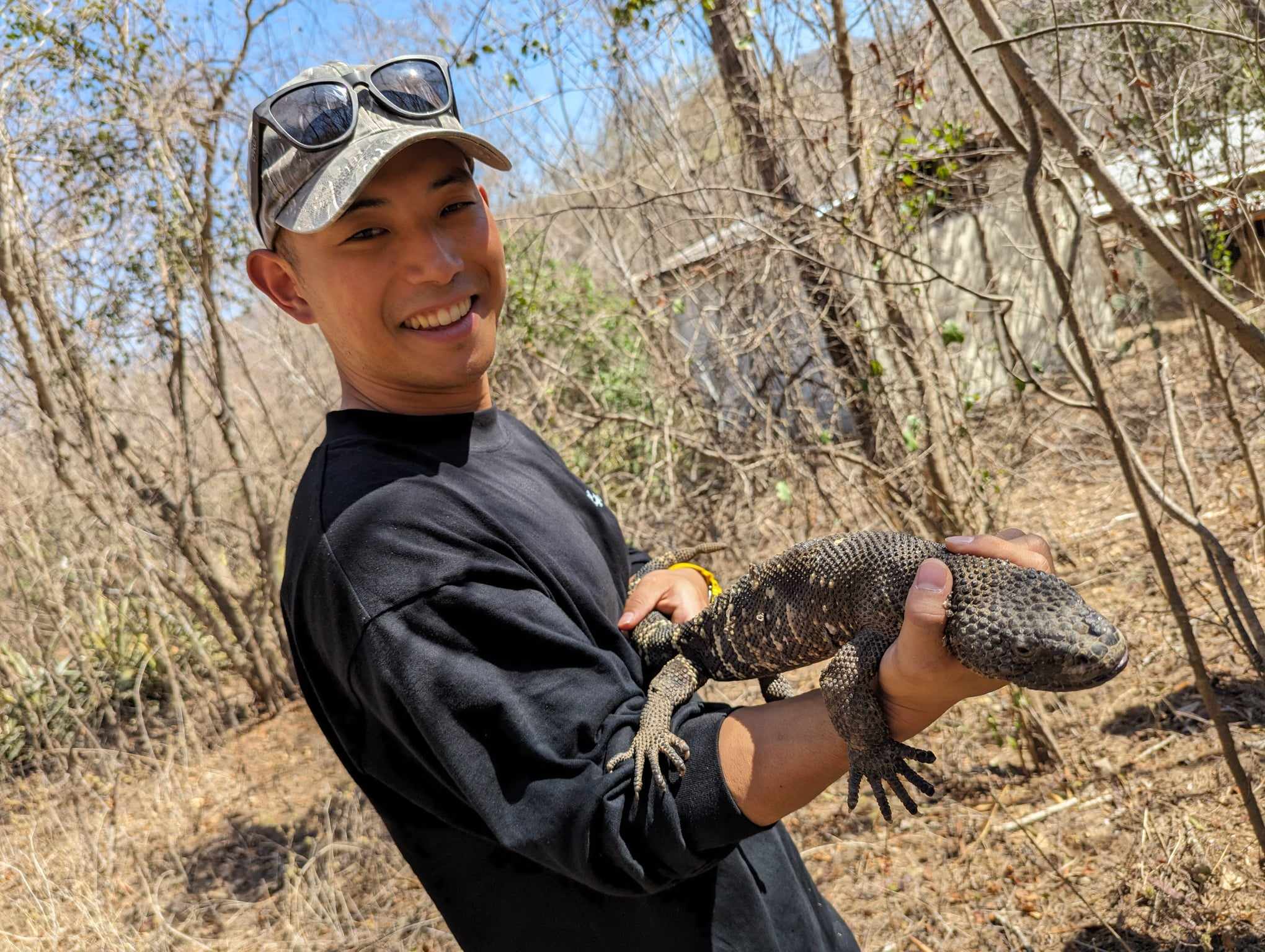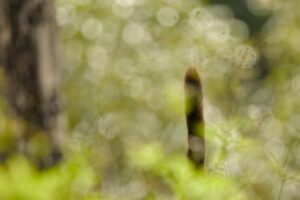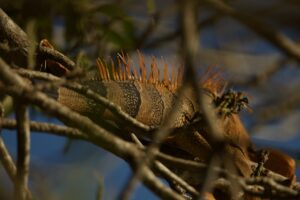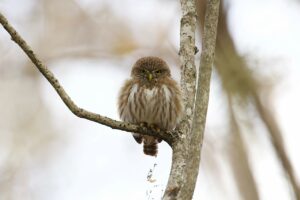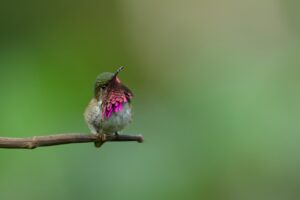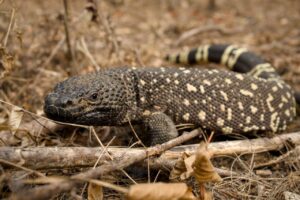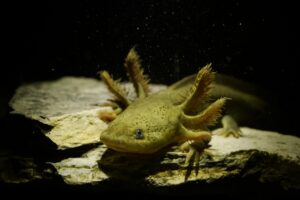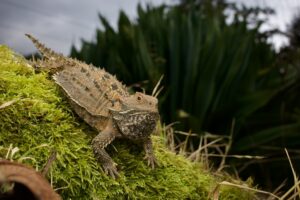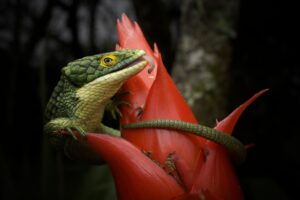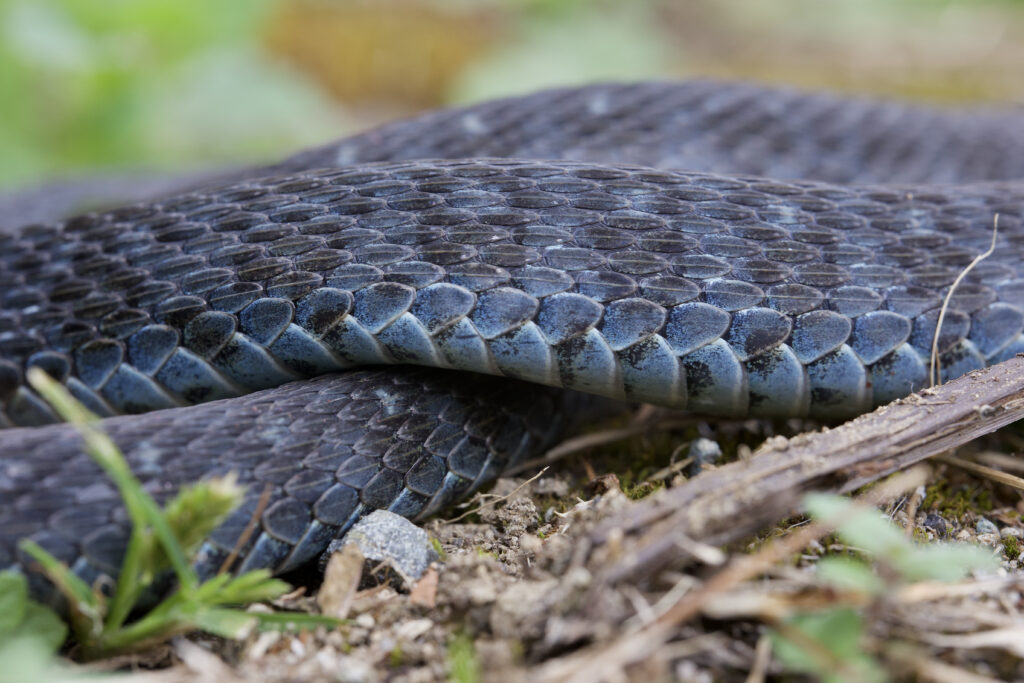
The elusive blue creature captivating reptile enthusiasts worldwide—the Tiger Keelback snake (Rhabdophis tigrinus)—is famed for its striking red and yellow hues. Renowned for its unique ability to wield both venom and poison selectively, this snake species has garnered attention.
In particular, the Western regions of Japan boast an intriguing variety of blue morphs among the Tiger Keelbacks, adding allure to their existence.
Here’s the basic info you need to embark on your quest
Blue Tiger Keelback Basics
Season
April to November
Locations:
Hokkaido, Honshu, Shikoku, Kyushu, surrounding islands, Taiwan, Korean Peninsula, etc. Widely distributed from plains to hilly areas.
Diet
Frogs, lizards, fish, etc.
Size
60-120cm
Local name
Yamakagashi
About the Tiger Keelback
These snakes thrive across Japan, commonly found in paddy fields and water edges, exhibiting a preference for frogs as their meal of choice. Recognized for their diverse morphs, distinguishing them can be challenging, leading to mistaken captures and subsequent bites. Yet, their temperament remains gentle; they don’t display aggressive behavior. Until 1974, they were deemed non-venomous, but research revealed venom in their rear fangs used during predation. Moreover, they store poison from their prey, such as toads, and when pressured around the head, release it through their nuchal glands.
Morph
Morphs Classified into four main types, these snakes often display mixed color variations, adding richness to their diversity:
- Normal Type: Predominant around the Kanto region, showcasing stunning red and yellow checkered patterns.
- Brown Type: Common in the Kanto region, featuring subdued colors but often seen in larger specimens.
- Melanistic Type: Observed nationwide, resembling the national snakes (Shimahebi) in the same areas, demanding caution.
- Blue Type: Abundant from western Honshu to Kyushu, arguably one of Japan’s most beautiful serpents.
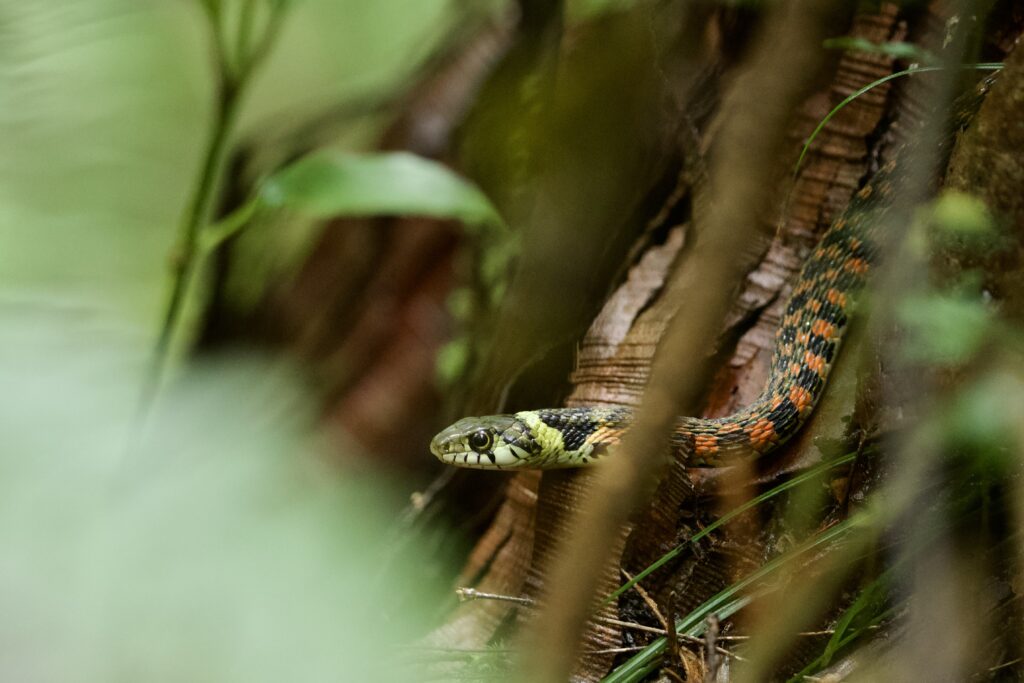
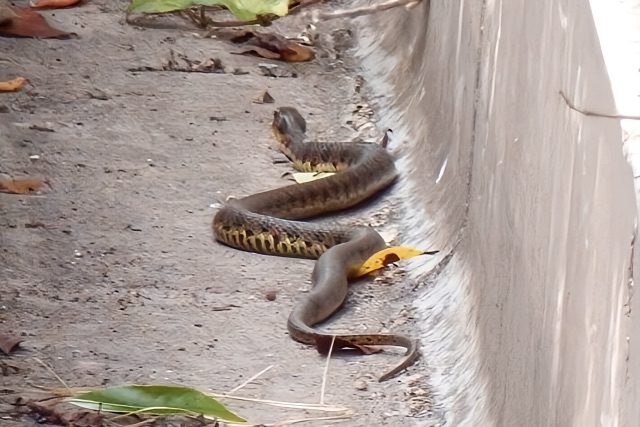
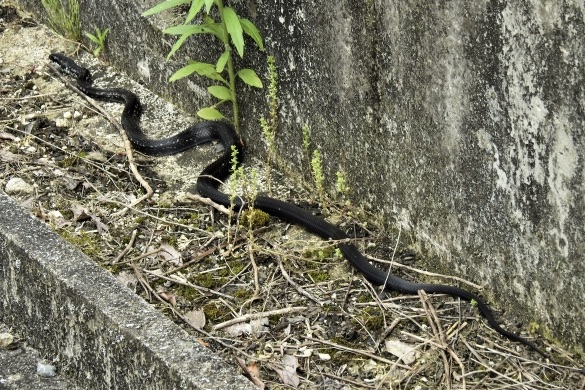

Habitat As mentioned earlier, the Tiger Keelback frequents water edges in pursuit of its frog diet. They also require forests for breeding and hibernation, making them more visible in forested and mountainous areas during early spring or late autumn, around the time before or after paddy fields are flooded. Being diurnal creatures, they are rarely seen at night, and sightings on roadsides are infrequent. When searching, walking rather than cruising is recommended.
Field Notes
During my observations in the Chugoku region, an area surrounded by mountains and abundant paddy fields, I spotted around 15 Tiger Keelbacks in two days. Among these, 7 were blue, 4 were black, and 4 were of the normal morph.
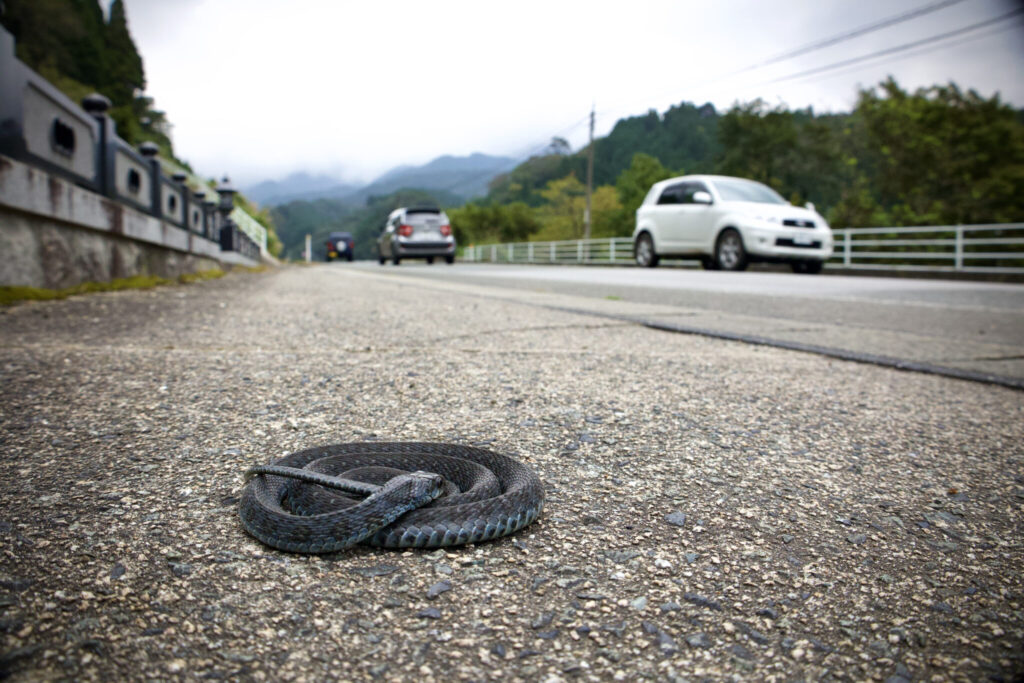
which was still beautiful

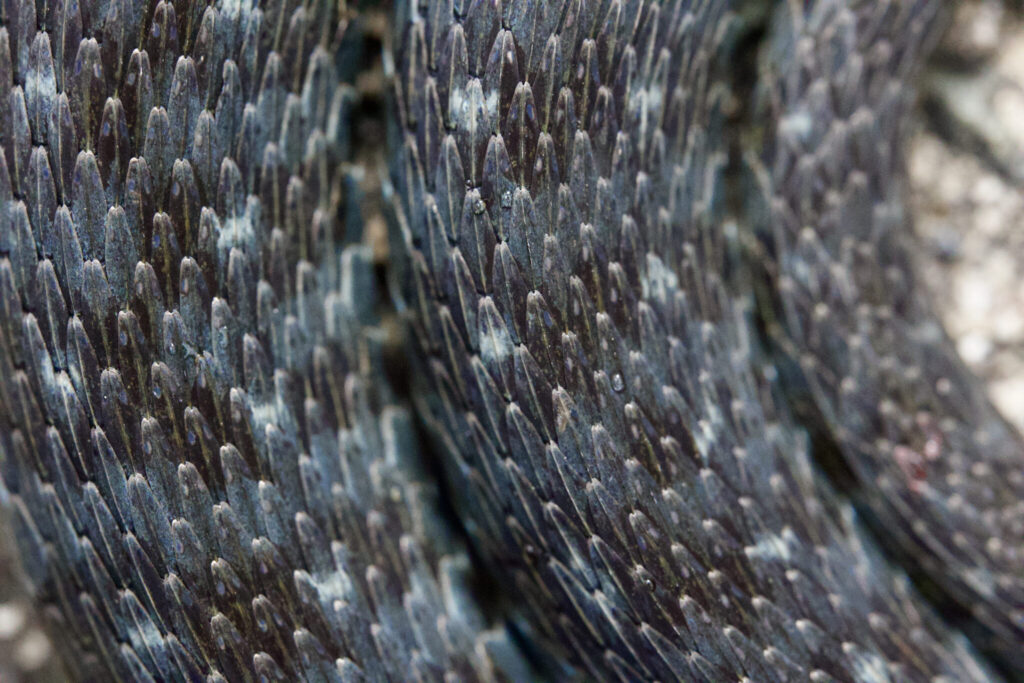
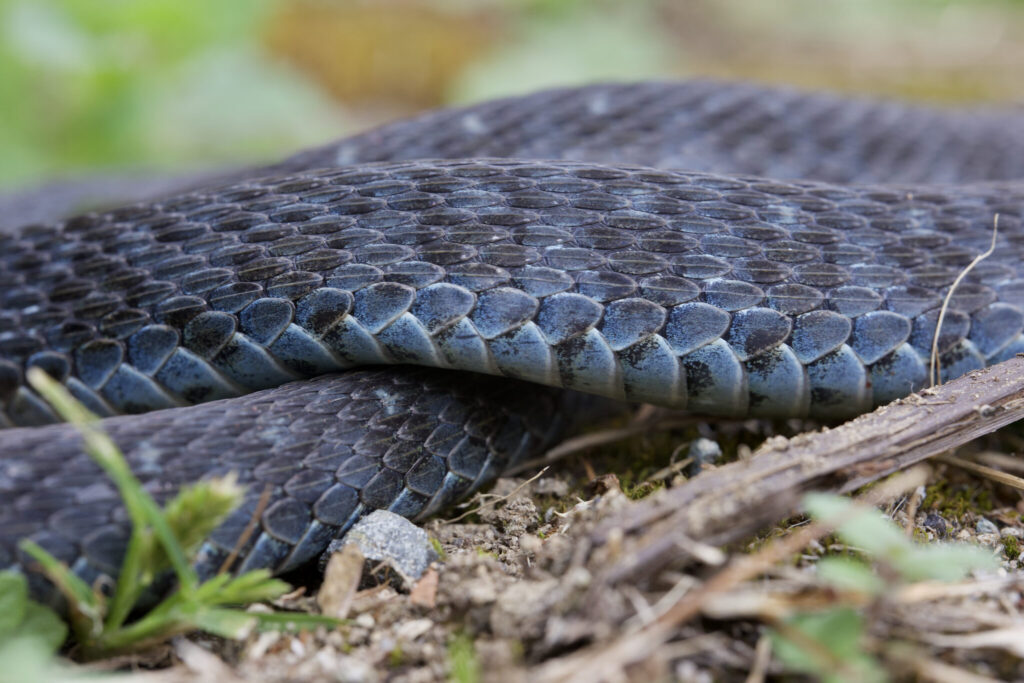

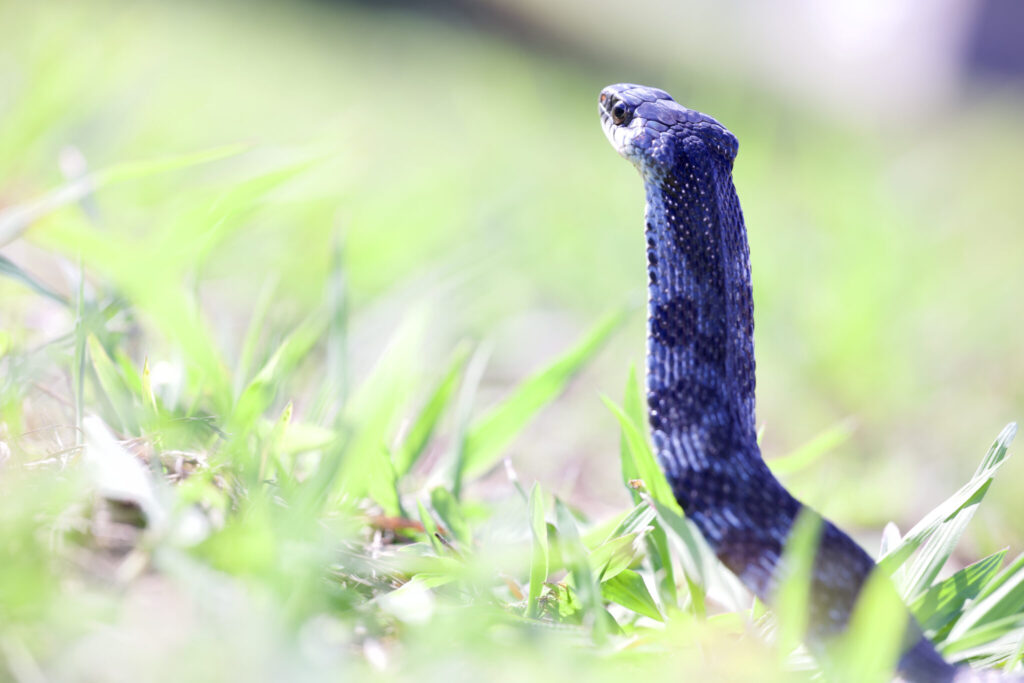
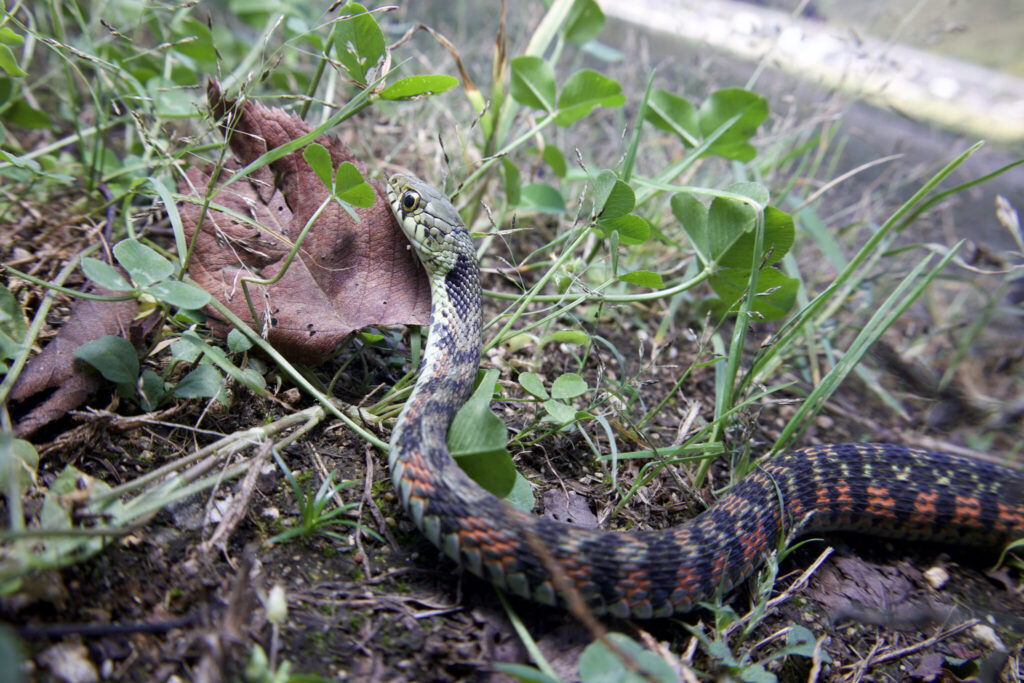
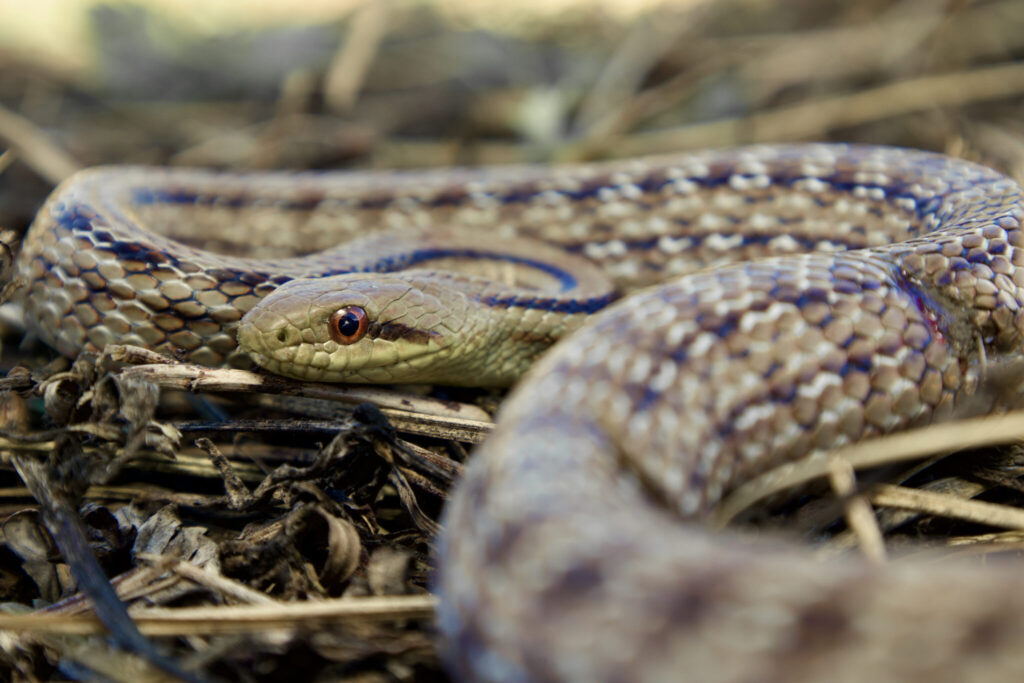
Elaphe quadrivirgata

Mauremys reevesii
In conclusion, this information covers the fascinating aspects of the blue Tiger Keelback. For further inquiries or additional information, please feel free to reach out via Contact!

